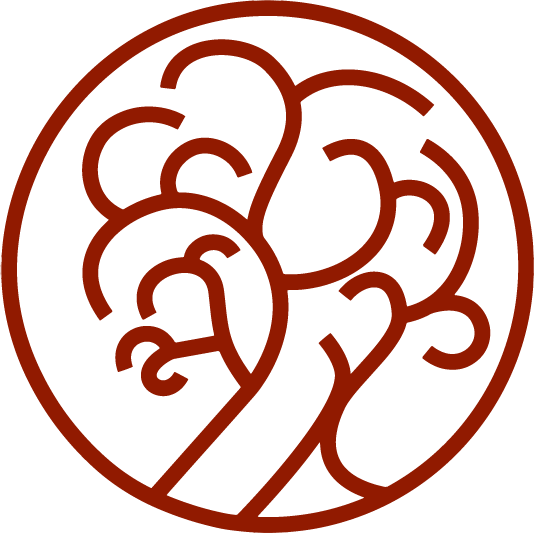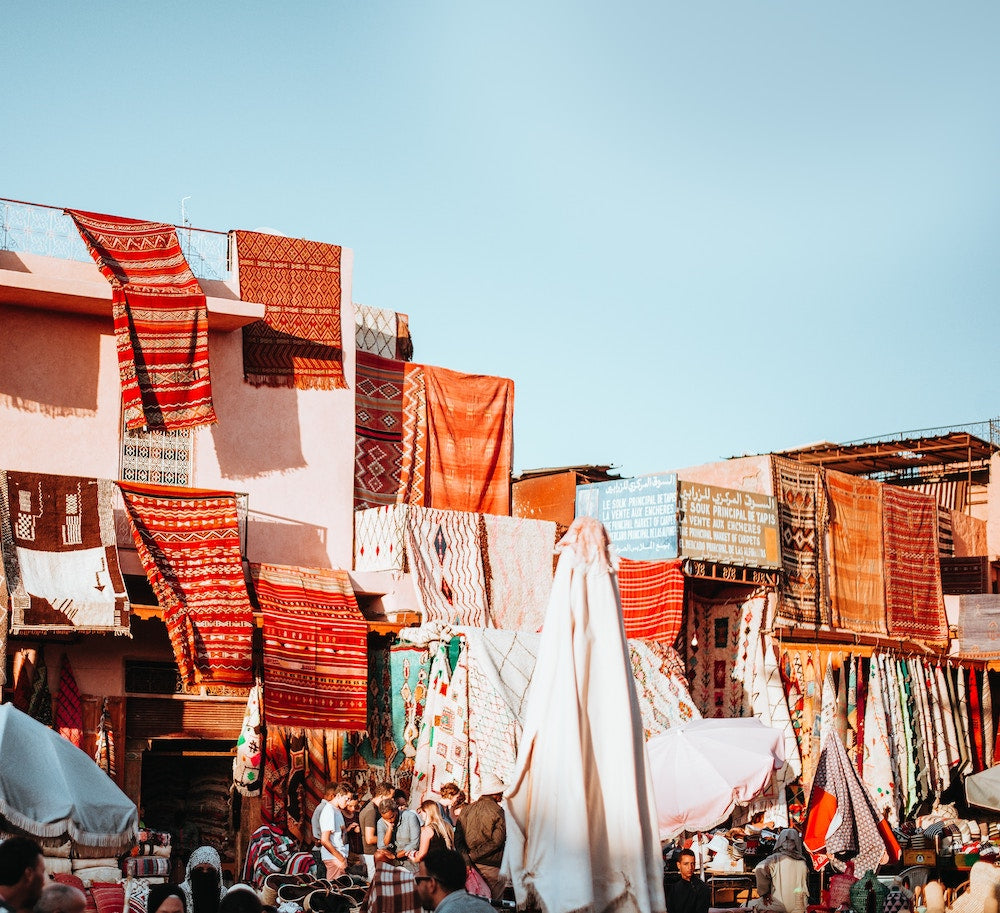Wandering the souks of Morocco, you’ll find yourself surrounded by rugs of every shape, size, and colour. As you look a bit closer, you’ll see some with a unique style, simple geometric patterns and a high-quality wool. These are the stunning handcrafted rugs created by Berber tribes from the Atlas Mountains.
The History of Berber Rugs

The Berbers comprise a group of people spanning North Africa and includes Tunisia, Algeria and others, although most live in Morocco today. In these areas, rug-making traditions go back thousands of years. The rural peoples of the Atlas Mountain region developed their techniques in isolation, away from outside influence, and kept their heritage well into modern times. The Berber knot itself, used in weaving, can be found nowhere else in the world. The ancient Berber rug designs have been passed down through generations of weavers, from mother to daughter. Each town, each family, each community, all have their own distinct styles that are impossible to fully categorise. Especially with the tribes living so close to one another, mixed marriages also resulted in a marriage of tribal symbols in the weaving. Up until the 20th century the carpets were not even made for export but rather for internal markets or personal use in their homes. For example, they are used as comfortable sleeping mats during the cold winter months.
What are Berber Rugs Made Of?

Traditional Berber rugs are made by hand from sheep’s wool, one of the most important resources for the tribes. The sheep grown in natural landscapes of the Atlas Mountain areas of Northern Africa and Morocco provide the excellent-quality undyed and organic wool that leads to authentic Berber rugs. The loop pile technique is used most often but others can be included. From raising the sheep to putting the finishing touches on the individual end knots, there is an enormous amount of work that goes into each product. The entire process can last years.
Moroccan Berber Rug Styles

Moroccan Berber rugs are very distinct, favouring simple patterns over more ornate and intricate designs. They are without flowers, trees, animals and complex interlocking coils. You will often see simple lines, crosses, and diamonds, shapes that may seem crude, but actually represent tribal traditions, fertility, and the role of gender. These symbols express not only personal experiences of the women weaving them but also ancient stories. The rugs are also borderless, and use off-centred patterns to create a unique effect. Used in the home of famous designers like Frank Lloyd Wright, these are perfect for those with a keen eye to contemporary arts since many designs are minimalistic in nature. Note that other Moroccan rugs, such as from Rabat, are influenced by Arabic design and thus are quite different.
Beni Ourain Rugs

The signature style of Beni Ourain rugs is white or cream in colour due to undyed wool, and with a series of dark diagonal lines that form diamond patterns. The name comes from the group of berber tribes located in the northern Atlas Mountains in Morocco. Like most Moroccan rugs, they are handmade from sheep’s wool, and this region produces some of the finest. It is one of the most popular and coveted styles of Moroccan rugs. The monochromatic simplicity of high quality Beni Ourain rugs is perfect for modern homes, and very versatile in decoration.
Azilal Rugs

Coming from a small town in the Atlas Mountains from where it gets its name, Azilal rugs follow similar motifs to Beni Ourain carpets but are more colourful and slightly more complex, due to the single-knotted nature. The designs themselves do not follow a set pattern and colour plays a more important role in the overall piece. Dyes that are used are natural and come from local plants in the region, such as sumac or turmeric.
Boucherouite Rugs

The unique boucherouite rugs are colourful recycled fabric rugs made by the berbers, mainly for practical use in the home. With the changing economic climate, new methods of rug-making have begun to be accepted by women in different tribes. Not restricted to wool, the material patchwork from other sources lead to brighter and bolder colours and more experimental designs. These rugs evoke a sense of fun and happiness.
Get Your Own Authentic Berber Rug

With imitations popping up from places like Turkey and India, it’s becoming harder and harder to discover truly authentic Moroccan berber rugs. Many are also artificially aged and treated to be made to look “vintage” although they are very far from this. Unless you are a collector, it’s difficult and expensive to find vintage pieces directly from makers who created these with a pure joy of crafting without intent to sell to Western markets. Nevertheless, quality Beni Ourain rugs and other Moroccan carpets are still being made by Artisans dedicated to their craft. It is crucial that this art continues to be passed down by families so that we can preserve this beautiful art form. Whatever your style, these rugs are the perfect way to bring unique North African heritage into your home.

